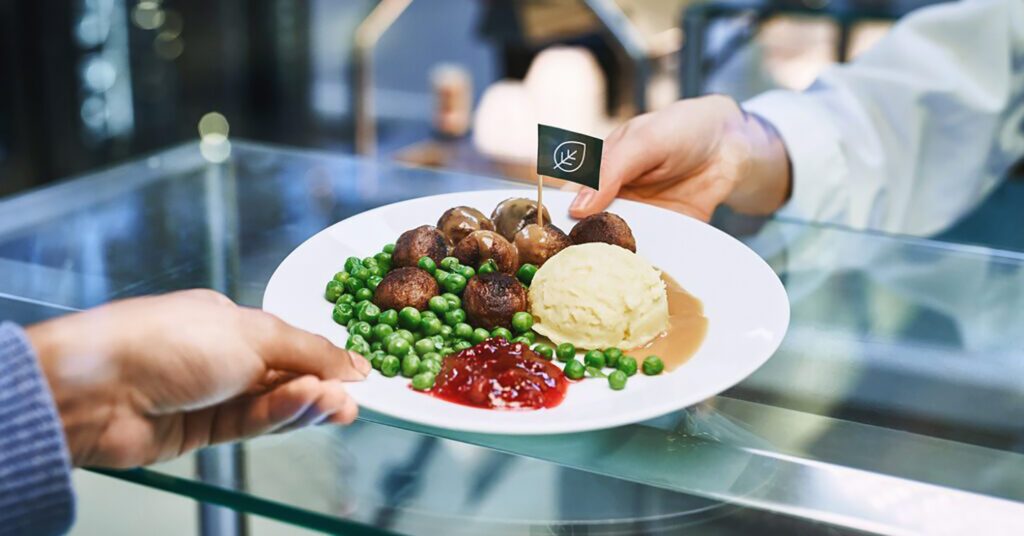IKEA is courting its new tech department with the allure of developing a more sustainable future…and with a plate of 3D-printed vegan meatballs.
Last week, the Swedish furniture giant revealed its new “Taste the Future” recruitment campaign for its technology and data department. If you’re one of the lucky European applicants for the 150 vacant roles, you might be invited to taste a 3D-printed, plant-based version of its iconic Swedish meatballs.
The accompanying campaign video, which shows a white machine building the meatball one layer at a time, beckons: “Let’s meet for a job interview over some 3D-printed meatballs. Yes of course they are without meat.”
“The 3D-printed meatballs are just one experiment where IKEA is exploring new technologies to bring its vision to life. All to reach more people and create a positive impact on the world,” the company said in a statement.

IKEA is giving meat the boot
Unfortunately, it appears that the 3D-printed vegan meatballs are only a marketing hook for now.
IKEA has not revealed what they are made from, or which 3D printing technology is used to create them. While IKEA may not be ready to announce its foray into 3D printing, a handful of startups are paving the way for it to start showing up on diners’ plates. The nature of 3D printing—chiefly, the way that the machine prints out ingredients layer by layer—allows companies to mimic the texture of meat.
IKEA debuted its Swedish meatballs in stores back in the 1980s, and they’ve remained a fan favorite over the decades. But, over the past decade, the retailer, which has nearly 460 stores in 60 countries, has made several sustainability commitments, which has involved straying from meat—one of the major contributors to global human-caused carbon emissions.
A little over a year ago, IKEA said that it would make 80 percent of its packaged food and 50 percent of its restaurant menus plant-based by 2025 as part of its sustainability goals. With three more years to go to meet its commitment, IKEA has made some progress, targeting some of its most popular menu items. In 2020, it launched “plant balls,” a meatier, pea protein-based version of its veggie balls, designed to appeal to flexitarian taste buds. Its veggie dogs, first introduced in 2018, were also a major success and European locations added dairy-free soft serve to the menu in 2019. At the time, the retailer said that it was even looking into developing an oat milk base.
IKEA committed to becoming “climate positive” by the end of the decade, meaning it aims to reduce more greenhouse gas emissions than it emits. Late last year, it announced that it would phase out plastic packaging by 2028.


